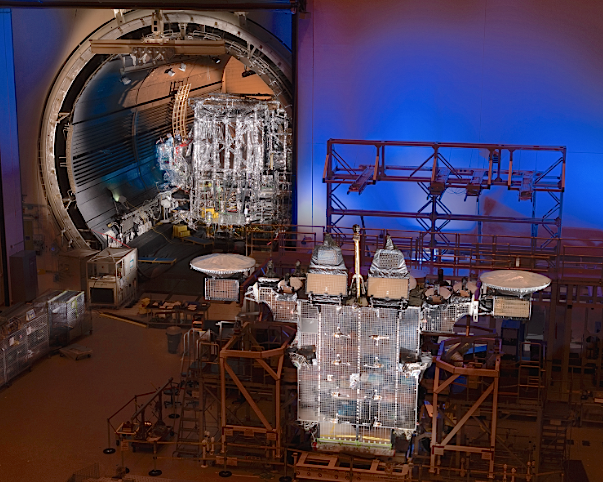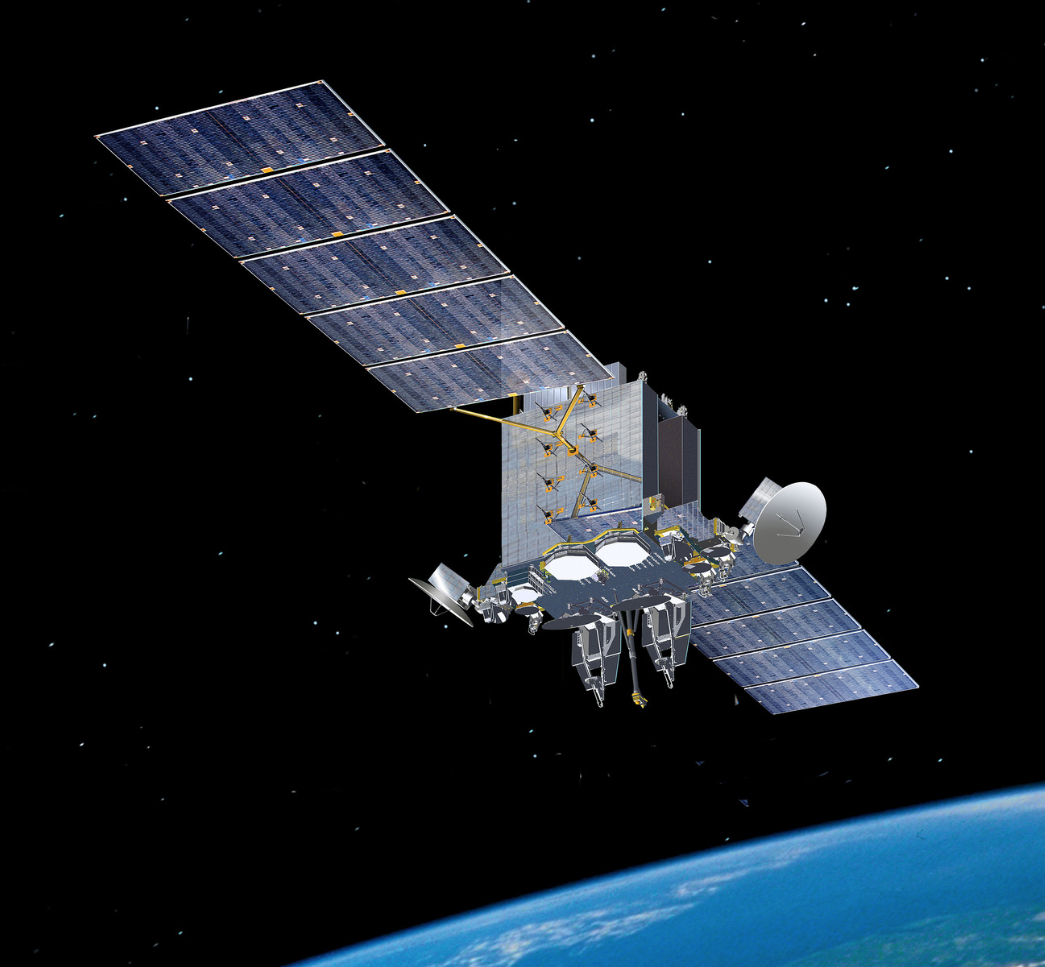
AEHF-4 and AEHF-5 AEHF-4 (foreground) with the antenna wings extended and AEHF-5 (background) visible in the open DELTA chamber.

Tough tests of satellites are meant to ferret out any frailties on the ground before they are launched, and a super tough evaluation just took place by Lockheed Martin (NYSE: LMT) on its fifth Advanced Extremely High Frequency (AEHF-5) satellite in preparation for delivery to the U.S. Air Force in 2019.
The tests included realistic simulations of its future launch experience such as the 39 days of Thermal Vacuum Chamber (TVAC) testing, AEHF-5 was subjected to extreme cold and heat in zero atmosphere, to simulate its upcoming on-orbit life. TVAC is a part of a battery of tests that ensure a satellite will arrive in space functionally sound and ready to operate through the extreme temperature changes of space.
Following Lockheed Martin's TVAC test series, AEHF-5 completed acoustic testing, where the satellite was subjected to high intensity, low frequency sound waves that simulated the vibrations generated by a rocket propelling its payload from zero to over 17,500 miles per hour in under eight minutes.

Artist's rendering of a U.S. Air Force Advanced Extremely High Frequency (AEHF) satellite in space. www.lockheedmartin.com/aehf
Michael Cacheiro, vice president for Protected Communications at Lockheed Martin Space said TVAC and acoustic tests are critical milestones in the production cycle of a satellite, where they have one shot to get it right, so they take every precaution to ensure the vehicle is ready for the harsh space environment. They design and build their AEHF satellites to serve the military’s strategic and tactical protected communications needs. The team and the satellite performed flawlessly, and AEHF-5 is now in system level testing.
Following its anticipated 2019 launch, the satellite will join the AEHF constellation that continues to provide global, highly-secure, protected and survivable communications for U.S. and allied warfighters on ground, sea and air platforms.
In addition to AEHF-5, the fourth AEHF satellite is rapidly nearing the end of its production journey. AEHF-4 will be shipped to Cape Canaveral Air Force Station later this year in preparation for a launch on an Atlas V launch vehicle. Once on-orbit, AEHF-4 will complete the minimum constellation of AEHF satellites needed to bring global Extended Data Rate (XDR) connectivity to warfighters and international partners.
Cacheiro added that XDR adds an unprecedented protected communication capability, providing 10 times more communications throughput than the legacy MILSTAR constellation.
The AEHF team is led by the U.S. Air Force Military Satellite Communications Systems Directorate at the Space and Missile Systems Center, Los Angeles Air Force Base, Calif. Lockheed Martin Space, Sunnyvale, California, is the AEHF prime contractor and system manager, with Northrop Grumman Aerospace Systems, Redondo Beach, California, as the satellite payload provider.

